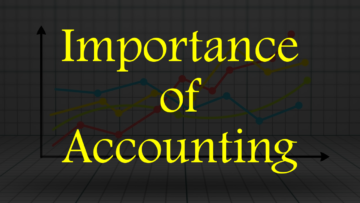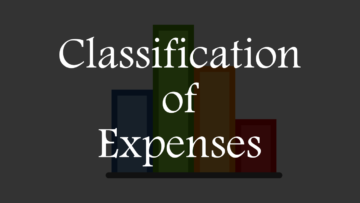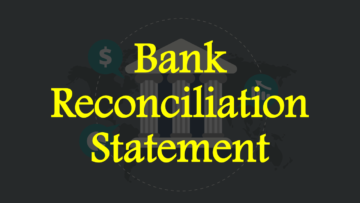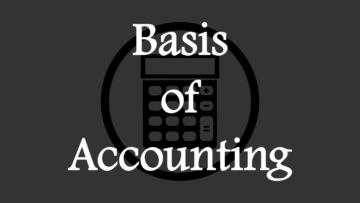The term credit has various meanings, for now we are talking about debit and credit used to manage transactions.
There are many principles, concepts, conventions, rules, formats, etc. in accounting that help in doing the accounting work in a better way and one of them is credit which is used along with debit as both cannot be used separately. Whenever credit is used then debit will also be used and whenever debit is used then credit will also be used. In simple language, these are two sides of a coin, i.e. two sides of a transaction, one debit and the other credit.
Talking in detail, in accounting the transactions are recorded in the books as per the dual aspect principle which means every transaction has two aspects, one debit and the other credit. For example, if cash payment is received from the debtor, then the debtor’s account is credited, and the cash account is debited. Similarly, if a cash payment is made to the creditor, then the creditor’s account will be debited, and the cash account will be credited. The above example shows that every transaction has two sides: one debit and the other credit.

Table of Contents
What is Credit?
Credit is a concept in accounting that represents an aspect (side) of a transaction, and it is always equal to debit as both are based on the accounting equation (debit = credit / asset = capital + liability). The term Cr. is also used to represent credit, and it is an abbreviated form of credit. While recording a transaction in the book the account which is credited is recorded on the right side. Which side of the transaction will be credited is determined by accounting rules which are also known as the rules of debit and credit.
If we look at it according to accounting rules, in the personal account, the giver will be on the credit side, in the real account, whatever goes out will be on the credit side, and in the nominal account, all income and gain will be on the credit side. If we look at it according to the category, then capital, liability, revenue, etc. will come on the credit side, and expenses, assets, etc. will come on the debit side.
Traditional Approach
| Personal Account | – Debit – The Receiver – Credit – The Giver |
| Real Account | – Debit – What Comes In – Credit – What Goes Out |
| Nominal Account | – Debit – All Expenses/Losses – Credit – All Income/Gains |
Modern Approach
| Asset | – Debit – To Increase – Credit – To Decrease |
| Capital | – Debit – To Decrease – Credit – To Increase |
| Expense | – Debit – To Increase – Credit – To Decrease |
| Liability | – Debit – To Decrease – Credit – To Increase |
| Revenue | – Debit – To Decrease – Credit – To Increase |
Features of Credit
Following are the features of credit:
1. Concept:
Credit is a concept in accounting that helps in managing/recording transactions in the books as per accounting principles. It represents one side of a transaction because as per the dual aspect accounting principle every transaction has two sides in which one side increases something and the other side decreases something or vice versa.
2. Equal to Debit:
Credit is always equal to debit, as both these are important parts of the dual aspect accounting principle and according to this principle every transaction has two sides, and the value of both sides is equal. If this principle is used to manage transactions, then it is mandatory to follow the concept of debit and credit in jurisdictions with other accounting principles.
3. Rules Apply:
In this, the rules of debit and credit apply because which account will be credited depends on the rules. For example, if the purchase is made on cash, then the purchase account is debited and the cash account is credited. Similarly, if the sale is made in cash, then the cash account is debited and the sales account is credited.
4. Recorded on the Right Side:
Due to the dual aspect accounting principle, every transaction has two sides, and hence every account is divided into two parts, one is the debit part which is also called the left-hand side, and the other is the credit part which is also called the right-hand side, hence every credit transaction is recorded on the right side of the account and every debit transaction is recorded on the left side of the account.
5. Increase and Decrease
Credit increases the balance of capital, revenue, liability, etc., and decreases the balance of assets, expenses, etc. and this is due to the rule of accounting i.e. rule of debit and credit which is also called the golden rule of accounting. For example, in the case of cash purchases asset (cash) decreases as the asset is credited, similarly in the case of cash sales revenue (sales) increases as the revenue is credited.
Read Also:
QNA/FAQ
Q1. What is credit?
Ans: Credit is a concept in accounting that represents an aspect (side) of a transaction.
Q2. Write the abbreviation of credit.
Ans: Cr.
Q3. Is credit equal to debit?
Ans: Yes, credit is equal to debit as both are based on dual aspect principle.
Q4. On which side of the ledger account is the credit transaction recorded?
Ans: A credit transaction is recorded on the right side of the ledger account.
Q5. Write the features of credit.
Ans: Following are the features of credit:
1. It is a concept in accounting.
2. It represents an aspect (side) of a transaction.
3. It is always equal to debit.
4. It is abbreviated as Cr.
5. It is a part of the accounting equation.
6. It is based on the dual aspect accounting principle.
7. It is recorded on the right side of the ledger account.
8. It is not used without debit.
9. The rule of debit and credit applies to it.
10. It increases capital, liability, revenue, etc.
11. It decreases assets, expenses, etc.













